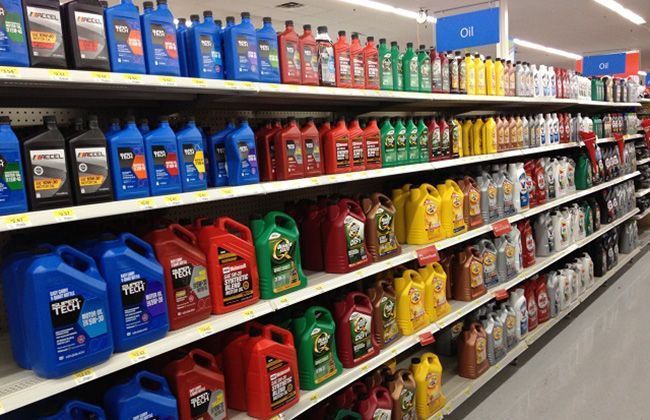5 things to know about engine oil
Modified On Dec 1, 2015 By Abhijeet Singh Rathore
- 1395 Views
The engine running through all the creases and seams of your motorcycle’s engine is nothing short of a faithful butler. It keeps the engine run smooth and cool, protects engine components, wipes away impurities from within and makes the engine live long. But buying one is not that easy an exercise. You cannot just go to the shop and get engine oil. A plethora of facts and figures come into the picture while purchasing engine oil. You need to know the basics about engine oils, their types and their tolerances to prepare your motorcycle for a long trip, or a spirited track ride or daily commuting use.

1. Types of engine oil
Classified on the basis of composition, there are three types of engine oils available in the market, mineral, semi-synthetic and fully synthetic oils. Mineral oils are made out of by-products of crude oil dug out from the earth. Synthetic engine oils are processed in a laboratory and designed specifically for engine use. Sitting in the middle are semi-synthetic engine oils which are a blend of mineral and synthetic oils. The other classification is done on the basis of usage. These oils are differentiated by being high-mileage, conventional and high performance. As the name suggests, high-mileage oils are designed to work for longer drain periods without compromising viscosity and temperature resistance. Conventional oils perform at optimum levels to provide everyday performance and standard drain intervals. High performance racing oils are painstakingly developed to withstand extreme temperature levels, mainly for racing uses.

2. Different grades
Engine oil rating system is developed SAE (Society of Automotive Engineers), which suggests classification of oil based on viscosity. You must have noticed ratings like SAE 15W-50 or SAE 10W-40 on the box of oil, or mentioned in your motorcycle’s manual. In these multi-grade viscosity engine oils, the cold-temperature viscosity is stated as a “W” which stands for “winter”, the “15” is the cold-temperature viscosity rating and finally the “50” is the high-temperature viscosity rating. All these complicated numbers mean that the oil has a smooth flow at low temperatures, but it still protects the engine at higher temperatures.

3. Engine protection
The most important work of engine oil inside the engine is to protect all vital components rubbing against each other. Engine oil form a thin slick layer inside the entire engine and lets every part slip off smoothly. This also keeps the engine temperature cool and protects vulnerable components. The engine oil running deep in all the nooks and crannies also pulls out contaminants and sticks them to itself. This then goes down to the oil sump and stays there inside the oil filter thus cleaning the engine off impurities.

4. Oil degradation
All this protection does take its toll on the oil and it starts to degrade over time. It starts aging by oxidising and becomes incapable in providing apt levels of smoothness and temperature resistance to your motorcycle’s engine. Though oil has a tendency to oxidise, but this process can be accelerated by higher temperature, moisture, impure debris like copper and engine wear. Over time oil molecules start becoming heavier and darker, hence you see dark coloured oil when you drain it, and lose its ability to stick to engine components. Another problem oxidisation brings in is the formation of acids which might corrode the engine from within. Hence, do not forget to change engine oil regularly.

5. Disposing away used oil
Used engine oil becomes a major toxic pollutant, and should not be just thrown away to the ground. Oil that has been drained out from the engine can be recycled and used again. Incorrect disposal of used engine oil can be an environmental threat and can seep into ground water.
